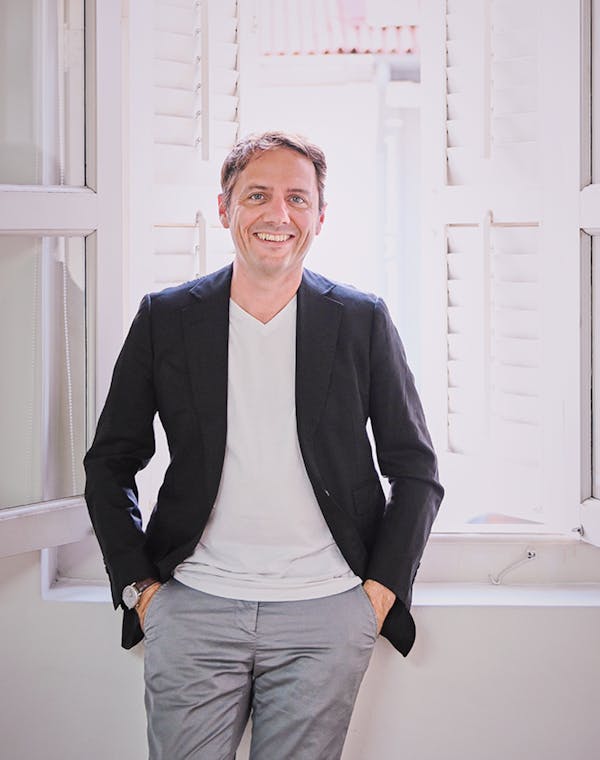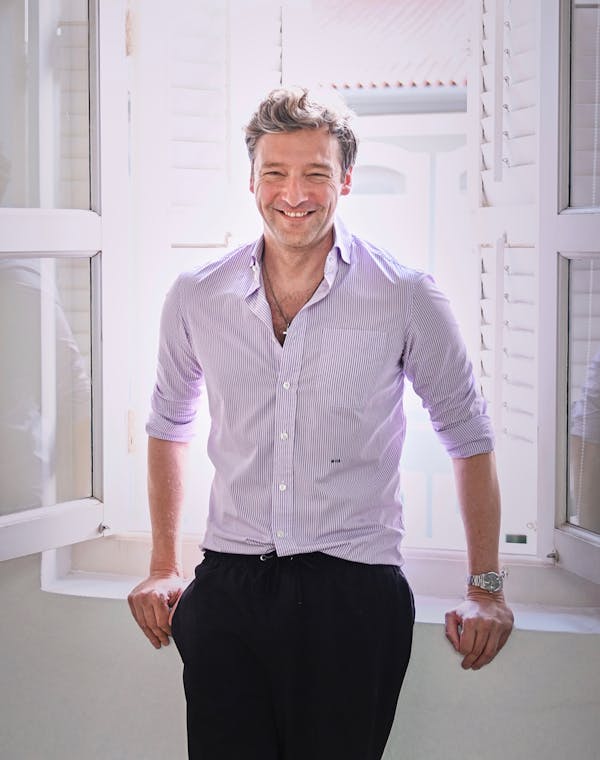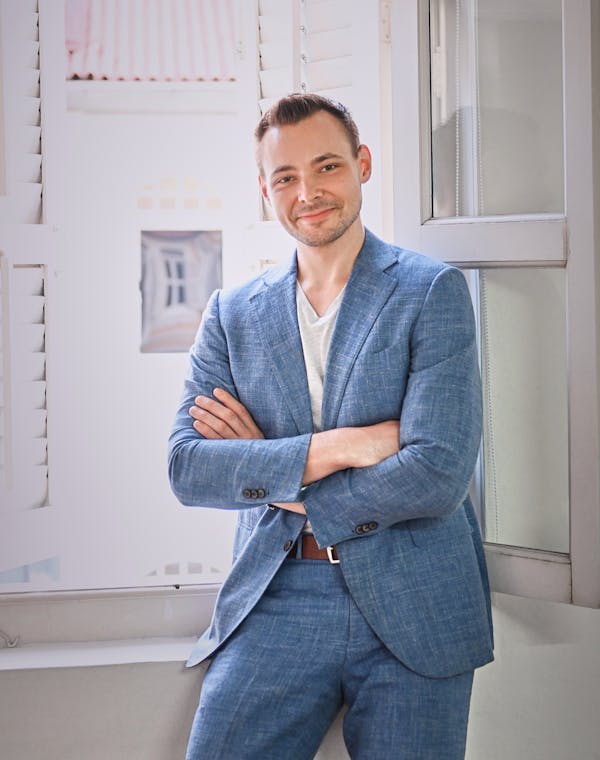The extroverted one who loves connecting people and ideas across continents – and helping great ideas actually succeed
Meet the leaders of MING Labs – Matthias, Marc, and Sebastian
We think that sharing some ideas and thoughts is much more interesting than listing our experiences and who worked where, etc. All of that's on LinkedIn anyway.
It's a pleasure to meet you.

Matthias
Roebel
Thoughts on
MING & innovation
The story of MING Labs started between people across two continents, and that fact has been part of this company's DNA from day one. Marc and I met in Stuttgart, my hometown, back when I was working for IBM in Shanghai. I immediately thought, wow, connecting with this person would really make a difference. It's that feeling you get when you meet people with new ideas and new perspectives. They help you connect dots you haven't connected before.
Something I've always strived for in my life is being open-minded – letting other people's opinions count, and at the same time trying to get some of your views across.
That is crucial for innovation because everyone has bright ideas, but they are not alone in this world. You always have to allow different people's thoughts and ideas to come together to create something truly new.
This whole topic of connecting people and ideas across cultures, across continents, is a very important success factor we see in digital transformation projects with some of our larger clients. In the past, there was often this approach that someone had a great idea and then the company just decided to roll it out globally.
That just doesn't really work anymore, because users – humans – are so used to convenient, tailor-made solutions and those solutions look very different in different cultures. If you don't listen carefully to what's going on in different parts of the world your solution might not be successful there. Although it was a huge success back home. That is something we take very seriously at MING Labs. We have very international teams. We carefully select those teams from different cultural backgrounds around the world, because there's always an interesting perspective someone brings in that you haven't thought about before.
That open-mindedness is also something that big companies should embrace in their digital transformation journeys.
If you take this journey seriously, you really have to embark on it together with your people – it’s about having a strong organizational culture and getting everyone on board, getting the whole crew behind you. We've seen so many great ideas fail because of maverick moves that it really just proves that innovation must be a well-orchestrated effort.

Marc
Seefelder
The creative one who loves storytelling and thinks he understands designers (the jury is still out on whether designers feel the same)
Thoughts on
storytelling
As designers, we are constantly empathizing with users and trying to understand their problems. We dig deep, we build solutions, validate them, and so on. But the biggest struggle I see in digital transformation projects comes from within.
Because in big corporations, if you want to bring something to the market, there are many different departments involved. There's marketing, sales, maybe some external partners. So, many potential roadblocks if you think about it. Or, if you are an optimist (like me), plenty of potential allies to make something come to life. But unfortunately, it is very rare to see these departments aligned or pulling in the same direction and believing in the same thing.
The only solution I see to bridge all those silos is storytelling. Now, storytelling is nothing new. Storytelling is something we designers talk about all the time. Marketing talks about it all the time. It's on everyone's radar, but the problem is that we develop different narratives in all those silos. And those narratives don't add up, and then, we lack a compelling story. Instead what we have is noise. And the end users don't care, because they have a lot of options. Achieving a good product-market fit is impossible if you don't have a good story.
And this is the twist I would like to introduce in our industry. So, as designers, we should not start immediately focusing on certain users to understand their problems. We should rather sit down with everyone who has a say in this project with all the different, and very important, skill sets at the table: with marketing, with sales, even external partners and potential end customers, and try to figure out what are the best stories we could tell.
Once we identify and align on these stories, then the design process can start. The difference is that we are starting our journey on the same track, and it is guided and protected by the story. The story will unite us and help different departments to collaborate in making the right product decisions, the right business decisions, the right distribution decisions, and so on. So, my suggestion is let's dig for the stories first, let's find them, let's align on them, and then I am pretty confident that we have a chance to increase the success rate in digital transformation projects.

Sebastian
Mueller
The strategic one who reads a lot, writes quite a bit (getting better), and speaks on stages across Asia (with people actually listening)
Thoughts on
ethics in business
What I'm really thinking and talking about quite a lot and I feel really resonates with people at this moment in time is the whole aspect of responsibility and ethics in digital product creation.
Look what is happening out there with Facebook, Google, Amazon making headlines for all the wrong reasons. From my point of view, as designers, technologists, and as creators, we have immense power. This is probably unprecedented in history. We can do so much with just a small team of experts who can leverage everything we’ve achieved with tech and use it on an unprecedented, global scale. But we've also known, for a long time, that with great power comes great responsibility.
For example, if a client or a product owner comes and asks the designers or the technologists to cut corners, to use dark UX patterns, to do things that are not in the best interests of the user, but in the best interests of the bottom line, then from my point of view every person in the room who is creating that product and wielding that power has the responsibility to draw the line and say “No”, this is not the right thing to do.
I cannot put this out into the world, because once it's out there, it starts to shape the way people think, which is another very powerful thing about design. When you think about architecture it is very obvious to us that when you design a building, that building designs how people interact with it. If you design it to be open, maybe with a shared central space, then the way people behave in that space will be a lot about collaboration and exchange, generating new ideas.
Whereas, if you design a very closed-off space, where everybody has their own office and you barely have to leave it because all they need is basically in there, then you might have a very focused environment. Similarly, if you design for privacy, and create buildings that seclude any views from the outside, as you age it might actually turn into something that cuts you off from society and the things that you need. It is very similar with digital products because when you use a product, the designer has decided what you can do with it. There is a certain past and this past starts to literally shape neural pathways in your brain.
Every time you use Facebook it reinforces certain neural pathways in your brain and therefore it changes the way you think and the way you behave.
And this is a power and a responsibility, that from my point of view everybody who is creating products and who is in this space of purposefully creating something that people interact with, has to accept and also has to respect.